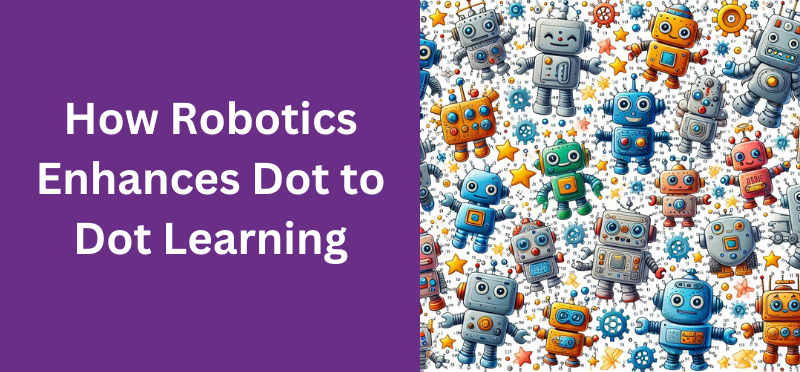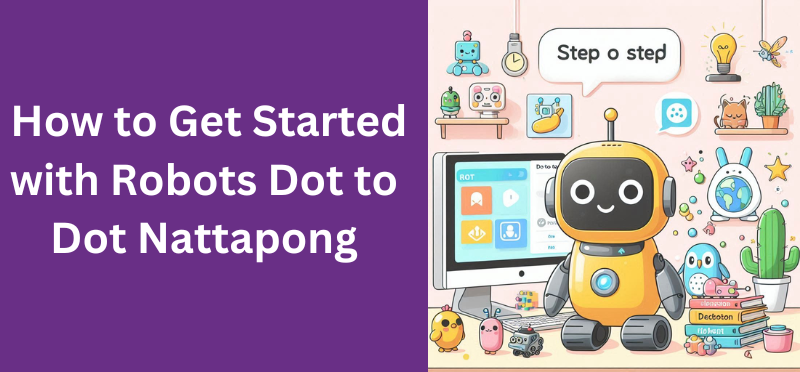What is Robots Dot to Dot Nattapong?
“Robots dot to dot nattapong” is a groundbreaking fusion of technology and creativity that combines the traditional dot-to-dot puzzles with robotics themes. In this unique approach, puzzles are no longer just drawings, but interactive experiences. By involving robots in the puzzle-solving process, children and adults alike can engage with these activities in an entirely new way.
The concept of “nattapong” refers to a creative initiative or individual whose designs are helping bring robotics into the puzzle world. The result? A fresh, innovative way to combine learning and entertainment while tapping into the excitement of robotics.
Why is Robots Dot to Dot Nattapong Gaining Popularity?
The popularity of Robots Dot to Dot Nattapong is surging, and for good reason. These puzzles tap into the growing interest in technology and robotics, especially in the educational sector. They merge traditional learning with modern tech, creating a fun and engaging way to stimulate creativity and critical thinking in learners of all ages.
Moreover, dot-to-dot puzzles have long been known to promote cognitive development, and by adding robotics to the equation, the puzzles become even more interactive and engaging. Whether for children learning basic shapes or adults looking for a brain boost, “robots dot to dot” puzzles are capturing attention everywhere.
The Intersection of Robotics and Learning Through Dot to Dot
How Robotics Enhances Robots Dot to Dot Nattapong Learning
The inclusion of robotics in dot-to-dot puzzles isn’t just for novelty – it adds real value to the learning experience. Robotics enhances interactivity, transforming a simple puzzle-solving task into an engaging educational adventure. Learners don’t just connect dots; they interact with robot-themed elements that require problem-solving and critical thinking.

For example, imagine a robot that helps children navigate the puzzle, or even a robot that responds to user inputs as they connect the dots. These interactive features promote active participation and offer learners the chance to apply their knowledge in real-time.
Educational Benefits of Dot to Dot Puzzles for Kids
Dot-to-dot puzzles have been proven to aid in a child’s development. From improving hand-eye coordination to enhancing focus and concentration, these puzzles are incredibly beneficial for young minds. The addition of robotics themes makes them even more appealing, as kids are naturally drawn to anything tech-related.
As children connect dots to form robot illustrations, they are not only learning basic shapes and patterns but also familiarizing themselves with robotics concepts. This sparks creativity, encourages logical thinking, and lays the groundwork for future interest in STEM fields.
The Role of Nattapong in the Robots Dot to Dot Trend
Who is Nattapong?
Nattapong is a pioneering figure in the world of robotics and educational puzzle design. His work focuses on integrating robotics with traditional puzzle formats, creating a blend of fun and learning. Nattapong’s contributions to the dot-to-dot genre have made him a notable figure in the educational and robotics communities.
His vision is to make learning fun and accessible, especially for younger generations, by combining the charm of old-school puzzles with the excitement of modern technology.
How Nattapong’s Innovations are Shaping the Future of Puzzle Design
Nattapong’s innovations are revolutionizing the way we think about puzzles. By blending robotics with dot-to-dot challenges, he’s transforming a simple activity into a hands-on learning experience. His designs not only teach children how to solve puzzles, but they also introduce them to fundamental robotics concepts.
Nattapong’s work emphasizes creativity, interaction, and technology, making it ideal for today’s tech-savvy generation. His puzzles provide an engaging way to explore robotics and problem-solving at the same time.
Step-by-Step Guide: How to Get Started with Robots Dot to Dot Nattapong

Step 1: Understanding the Basics of Dot to Dot
Before diving into the Robots Dot to Dot Nattapong aspect, it’s important to understand how traditional dot-to-dot puzzles work. These puzzles consist of a series of numbered dots, and the goal is to connect them in the correct order to reveal a picture. For beginners, start with simpler puzzles to get a feel for the process.
Once familiar with the basics, learners can gradually move on to more advanced puzzles, which integrate technology or robot themes.
Step 2: Introducing Robots and Nattapong Themes
Now comes the fun part: adding robots and Nattapong-inspired designs! Look for puzzle books, apps, or printable PDFs that feature robot themes. Nattapong’s designs typically integrate robots or technology in imaginative ways, making the puzzles more engaging for learners.
By introducing robotics into the equation, these puzzles become more dynamic, offering learners an interactive, tech-based twist.
Step 3: Leveraging Robotics Technology for Advanced Puzzle Solving
If you’re feeling adventurous, you can even incorporate robotics kits or apps to enhance your dot-to-dot experience. With robotics technology, learners can create their own puzzles or solve robot-themed puzzles in a more interactive environment. These tools allow users to experiment with robotics in a practical, hands-on way.
V. Exploring the Benefits of Robotics-Based Puzzles in Early Education
Why Dot to Dot Robots Foster Problem-Solving Skills
Dot-to-dot puzzles, particularly those involving robotics, are excellent tools for fostering problem-solving skills. As children connect the dots, they must think critically about the shapes, patterns, and sequence involved. When robots are incorporated into the puzzle-solving process, children learn to think logically and creatively, qualities that are essential for success in life and school.
The Future of Education with Robotics Integration
The rise of robotics in education is undeniable. By integrating robotics into activities like dot-to-dot puzzles, children are exposed to real-world technologies while developing critical skills. Robotics-based puzzles pave the way for a future where technology and learning go hand-in-hand, equipping children with the tools they need to succeed in a tech-driven world.
VI. Real-Life Examples: Success Stories with Robots Dot to Dot Nattapong
Case Study 1: How Schools are Adopting Robots Dot to Dot
Many forward-thinking schools have begun to incorporate robotics-based dot-to-dot puzzles into their curriculum. In one example, a local elementary school used Nattapong-inspired robot puzzles to teach kids about sequences and patterns, all while having fun solving puzzles. The results? A noticeable increase in engagement and enthusiasm for learning.
Case Study 2: The Impact on Children’s Cognitive Development
Parents have also reported significant cognitive improvements in their children who regularly engage with robots dot-to-dot puzzles. Kids who practice these puzzles improve their motor skills, hand-eye coordination, and logical thinking. The creative process of solving robotic puzzles encourages kids to think outside the box and approach challenges with confidence.
The Future of Robots Dot to Dot Nattapong Puzzles
The combination of Robots Dot to Dot Nattapong offers countless benefits, from enhancing cognitive skills to fostering creativity and problem-solving. By exploring robots dot-to-dot nattapong puzzles, you’re tapping into an educational trend that’s only going to grow. Whether you’re a parent, teacher, or learner, these puzzles are an exciting, interactive way to make learning fun and tech-savvy.
What’s Next for Robotics and Dot to Dot Puzzles?
The future of robotics and educational puzzles is bright. With advancements in technology and robotics, we can expect even more interactive, immersive puzzle experiences in the coming years. So, if you haven’t already, now’s the time to dive into the world of robots dot-to-dot puzzles and see how they can benefit you or your child’s learning journey.





